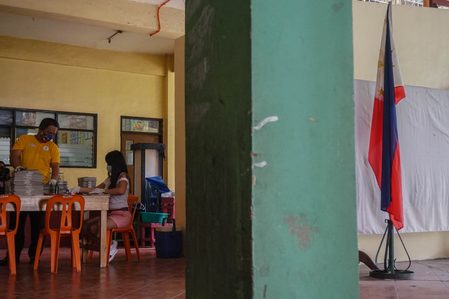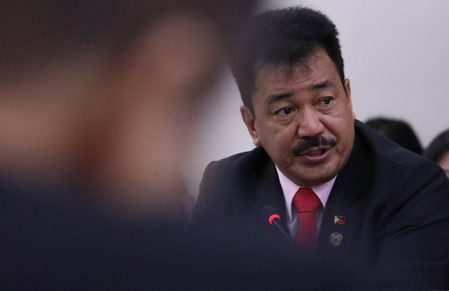SUMMARY
This is AI generated summarization, which may have errors. For context, always refer to the full article.
![[ANALYSIS] Too many children not enrolled this school year is a major concern](https://www.rappler.com/tachyon/2020/11/toomanychildren-640.jpg)
Days after raising questions about this year’s basic education enrolment figures, Undersecretary of Education Diosdado San Antonio shared the data as of November 6, 2020.
First the big picture: 25.04 million learners are recorded to have enrolled for this school year (2020-2021) in all public schools, private schools, and state/local universities and colleges (SUC/LUC). Compared to the previous year’s enrolment, this is a drop of 2,732,467 fewer learners in all grade levels (-10%).
Private schools reported a drop in enrolment of 2,080,233 (-48%). In public schools nationwide, the drop in enrolment was less but still significant: 584,432 fewer enrollees (-10%).
- In private education, where have the students gone?
- In public education, if large numbers shifted from private to public, this masks the large number that may be dropping out of public schools or delaying entry to formal schooling.
Kindergarten
At the kindergarten level, enrolment dropped by 239,547 learners (-12%). A total of 1.8 million enrolled this school year compared to 2.04 million enrolled in the previous school year.
Private school kindergarten enrolment was down by 165,371 (-66%) to 85,440 learners. Public kindergarten enrolment fell by 73,584 (-4%) to 1,717,49 learners.
Kindergarten (and early childhood development) is recognized as critical to developing learning success among children. Kindergarten is important for developing certain skills in children: socialization, communication, collaboration, early learning, language. Getting children into kindergarten at 5 years old prepares them (and parents) for Grade 1 (and elementary education) when they turn 6 years of age, considered the optimum age to start formal schooling.
Elementary
Total elementary enrolment (Grades 1 to 6) dropped by 1,263,482 learners (-10%), from 13.2 million to 11.95 million.
The drop in private schools was by 717,974 (-57%) to 534,797 learners. In public schools, there were 541,821 fewer enrollees (-5%) to 11,410,771. The remainder of learners were in SUCs and LUCs.
The pattern appears to be a shifting from tuition-based private schools to tuition-free public schools.
Starting school at the right age
Starting primary school at the right age makes a big difference in a number of ways based on worldwide PISA research. (PISA is the Programme for International Student Assessment – an international test in Science, Mathematics, and Reading for 15-year olds. The Philippines participated in PISA for the first time in 2018.)
Stated another way, starting schooling and formal education at the wrong age can have disadvantages. Starting schooling has a positive correlation with reading performance. Corollary to this, the negative effects of starting late can grow exponentially as a child grows older if this is not caught early.
Junior High School (JHS)
In JHS, there are 582,756 fewer enrollees this school year (-7%) than in the previous year.
Of this number, 597,999 were from private schools, representing (-42%) from the previous year. The public schools saw a drop of 45,515 learners (-1%) to 7,098,948 learners.
Senior high school (Preparation for university and/or the world of work)
In all senior high schools nationwide, DepED reported a total of 2.89 million students enrolled this new school year. Compared to the previous year, this is a drop of 303,129 students (-9%).
Private schools have 597,611 fewer enrollees (-44), leaving the total private SHS enrolment at 760,271 students.
In the public schools, there is an increase of 331,778 SHS students (+19%), rising to 2,098,596 students.
The pattern appears to be of private school students transferring to public schools.
How many have dropped out or disappeared?
Based on DepED reports from the previous school year, 96% of students have re-enrolled in all grade levels. Compared to the 2019-2020 total enrolment of 27.77 million students, however, the 2020-2021 school year enrolment is only at 90.16% of the previous year’s enrolment (25.04 million learners).
In absolute numbers, that means there are 1,307,115 public school learners (5.6%) not enrolled this school year in all grade levels.
A total of 429,012 learners are reported as transferees from private schools and SUC/LUCs to public schools (398,981 from private schools). This number is a lot lower than the difference in the number of private school enrollees between the two school years. This leaves 1,740,499 private school learners not yet enrolled. (Current DepED policy allows until November 21, 2020 to allow for late enrolment in private schools. Public school enrolment is fixed for the current school year with no more transferees from private to public.)
Therefore, of the 2.73 million not enrolled this year, 76% are from private schools, 21% are from public schools, and 3% from SUCs. (Have private school students transferred to private schools? This is not so clear.)
Most affected regions
Regions with 95% or more re-enrolment are considered stable. Those with 80-94% enrolment should be concerned. Those with less than 80% enrolment are critical.
At the kindergarten level, 9 regions saw large drops in enrolment from 5% to 20% from the previous school year (of concern): Regions III, IV-A, V, VIII, IX, X, XI, XIII, and NCR. BARMM saw a critical drop in K enrolment (-68%).
At the ES level, there were significant drops in 9 (of 17) regions: Regions III, IV-A, V, VI, X, XII, XIII, CAR, and NCR. BARMM had a critical drop in ES enrolment (-75%).
At the JHS level, the regions with the largest losses were Regions III, IV-A, V, VIII, X, XI, XIII, and CAR. C2: BARMM, again had a large loss in JHS enrolment (-58%).
At the SHS level, two regions had significant losses in enrolment: Regions III and X. Four provinces, however, had decreases in enrolment of greater than 50%: Regions IV-A (76%), BARMM (59%), CAR (79%), and NCR (75%).
All regions reported a drop in ALS enrolment. Region V had the sharpest drop (-70%), with 7 regions at below 50% enrolment as compared to the previous year.
What to work on now
One, the large number of kindergarten-age learners who did not show up should be traced. This should be a partnership between DepED, DSWD, and local governments. It might not be formal kindergarten interventions; day care and other early childhood interventions would be sufficient. What is important is to start children and parents early on getting involved and engaged. This starts with tracing.
Two, getting started early on reading and writing is critical for success in later life. Starting the 3Rs late will have compounding effects of poor learning in the higher grades. The more children miss this chance to start reading and writing early in the primary grades, the more disadvantaged they will be in life.
Three, the transition to high school is important in getting children thinking of what they want to do in their adult life. Dropping out at this stage gives children few advantages at finding meaningful work as adults.
This pandemic period is exposing a not-so-hidden side of Philippine society. The middle class is trying to cope, and a good part of this is to seek less-cost alternatives. This includes the shift from private schools to public schooling.
Lower income groups who appear not to be showing up for school is not a good thing. Taking a break from schooling or postponing entry for very young children is not a good calculus given the world experience. This form of coping will have long-term consequences for families and the country as a whole.
Certain regions of the country which are already lagging will be harder hit in the long run by this situation (i.e. BARMM).
To have so many children not enrolling for school is a major concern and should be addressed immediately. – Rappler.com
Juan Miguel Luz is former undersecretary of the Department of Education, and is a Fellow of the FEU Policy Center.
Add a comment
How does this make you feel?




![[Time Trowel] Evolution and the sneakiness of COVID](https://www.rappler.com/tachyon/2024/02/tl-evolution-covid.jpg?resize=257%2C257&crop=455px%2C0px%2C1080px%2C1080px)


There are no comments yet. Add your comment to start the conversation.